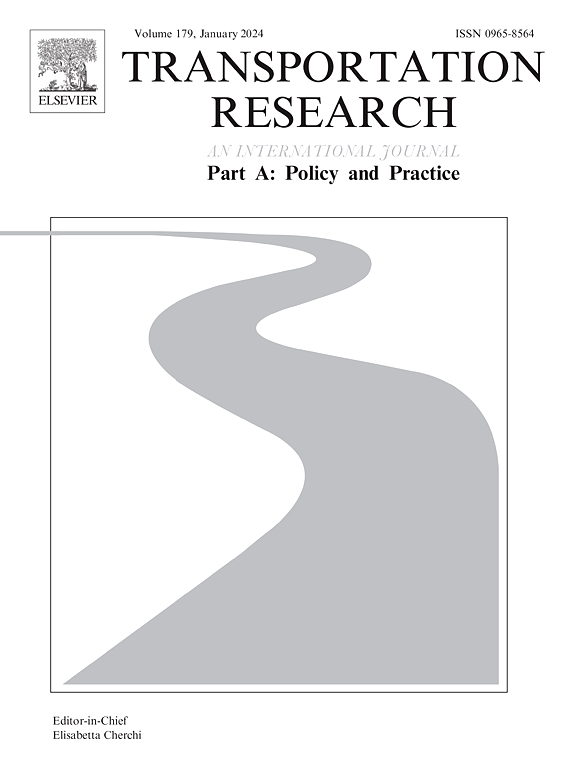The 15-minute challenge: Evaluating the gaps in accessibility and urban mobility
IF 6.3
1区 工程技术
Q1 ECONOMICS
Transportation Research Part A-Policy and Practice
Pub Date : 2025-03-31
DOI:10.1016/j.tra.2025.104453
引用次数: 0
Abstract
In the context of rapid urbanization and growing environmental challenges, the concept of the “15-minute city”, where essential services are accessible within a 15-minute walk or bike ride, has emerged as a key model for sustainable urban planning. This study evaluates the accessibility and urban mobility in Bucharest, Romania, based on this model. Bucharest is considered an appealing case study given the fact that it is facing significant issues with regards to the topic of transportation, emissions and segmented urbanization development, having one of its districts included in the “100 Climate-Neutral Cities by 2030” mission. Using geospatial analysis, statistical descriptions, and cluster analysis performed in Python, access to essential services such as education, healthcare, cultural activities, and mobility across six districts is assessed. The analysis is structured around four composite indices: Accessibility to Learning and Healthcare, Wellbeing and Quality of Life, Essential Services and Mobility, and Food Access and Provision. The findings indicate that District 2 is the most closely aligned with the “15-minute city” criteria, as it demonstrates a high level of service accessibility. Conversely, peripheral districts, such as District 6, demonstrate restricted access to mobility and healthcare services. Cluster analysis further confirmed the disparities between districts in terms of access to infrastructure and services, highlighting the necessity of targeted urban planning and investment. This research underlines the significance of integrated policies in order to improve sustainable urban mobility and mitigate regional disparities in service accessibility.
求助全文
约1分钟内获得全文
求助全文
来源期刊
CiteScore
13.20
自引率
7.80%
发文量
257
审稿时长
9.8 months
期刊介绍:
Transportation Research: Part A contains papers of general interest in all passenger and freight transportation modes: policy analysis, formulation and evaluation; planning; interaction with the political, socioeconomic and physical environment; design, management and evaluation of transportation systems. Topics are approached from any discipline or perspective: economics, engineering, sociology, psychology, etc. Case studies, survey and expository papers are included, as are articles which contribute to unification of the field, or to an understanding of the comparative aspects of different systems. Papers which assess the scope for technological innovation within a social or political framework are also published. The journal is international, and places equal emphasis on the problems of industrialized and non-industrialized regions.
Part A''s aims and scope are complementary to Transportation Research Part B: Methodological, Part C: Emerging Technologies and Part D: Transport and Environment. Part E: Logistics and Transportation Review. Part F: Traffic Psychology and Behaviour. The complete set forms the most cohesive and comprehensive reference of current research in transportation science.

 求助内容:
求助内容: 应助结果提醒方式:
应助结果提醒方式:


